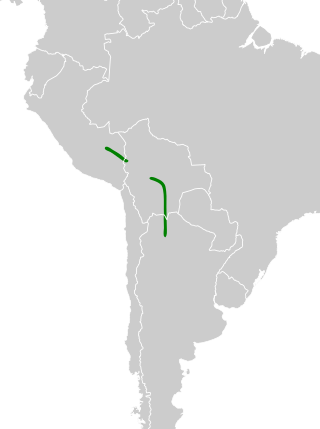
The white-throated antpitta is a species of bird in the family Grallariidae. It is found in Argentina, Bolivia, and Peru.

The stripe-headed antpitta is a species of bird in the family Grallariidae. It is found in Bolivia and Peru.

The brown-banded antpitta is a vulnerable species of bird in the family Grallariidae. It is endemic to Colombia.

The tawny antpitta, or western tawny antpitta, is a species of bird in the family Grallariidae. It is found in Colombia, Ecuador, and Peru.

The variegated antpitta is a species of bird in the family Grallariidae. It is found in Argentina, Brazil, Colombia, the Guianas, Paraguay, Peru, and Venezuela.

The masked antpitta is a Vulnerable species of bird in the family Grallariidae. It is endemic to Bolivia.

Hylopezus is a genus of bird in the family Grallariidae.

The Amazonian antpitta is a species of bird in the family Grallariidae. It is found in Bolivia, Brazil, and Peru.
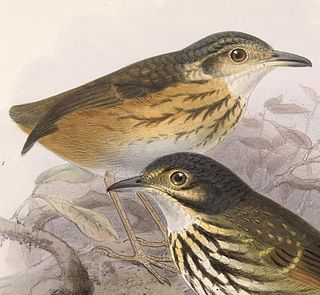
The thicket antpitta is a species of bird in the family Grallariidae. It is found in Colombia, Costa Rica, Honduras, Nicaragua, and Panama.

The white-lored antpitta or fulvous-bellied antpitta is a species of bird in the family Grallariidae. It is found in Colombia, Ecuador, and Peru.

The spotted antpitta is a species of bird in the family Grallariidae. It is found in Brazil, Colombia, French Guiana, Guyana, Peru, Suriname, and Venezuela.
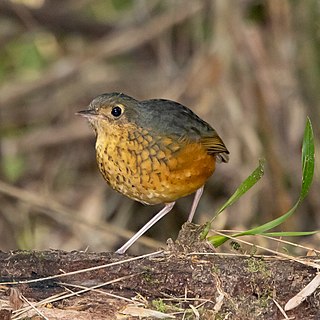
The speckle-breasted antpitta is a species of bird in the family Grallariidae. It is found in Argentina, Brazil, and Paraguay.

The white-browed antpitta is a species of bird in the family Grallariidae. It is endemic to Brazil.
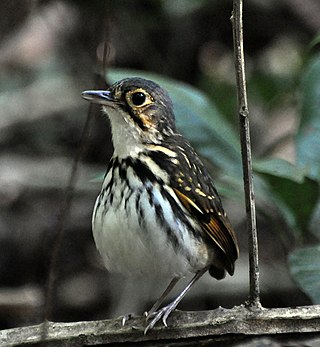
The streak-chested antpitta or spectacled antpitta is a species of bird in the family Grallariidae. It is found in Colombia, Costa Rica, Ecuador, Honduras, Nicaragua, and Panama.

The Alta Floresta antpitta is a species of bird in the family Grallariidae. It is endemic to Brazil.
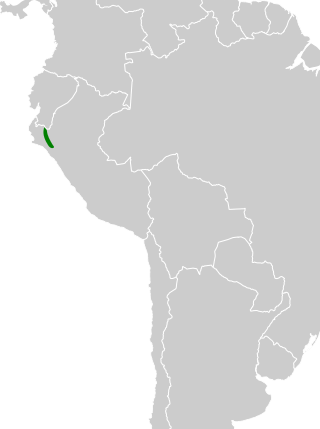
The Cajamarca antpitta is a species of bird in the family Grallariidae. It is endemic to Peru.
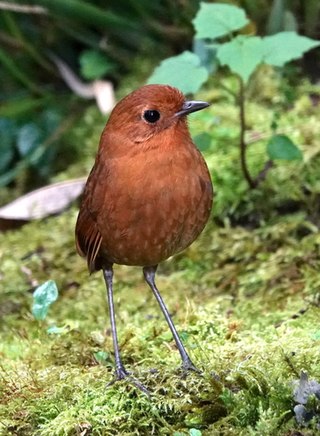
The equatorial antpitta is a species of bird in the family Grallariidae. It is found is Colombia, Ecuador, and Peru.

The Perija antpitta is a Near Threatened species of bird in the family Grallariidae. It is endemic to the Serranía del Perijá on the border of Colombia and Venezuela.

The Boyaca antpitta, or northern tawny antpitta, is a species of bird in the family Grallariidae. It is endemic to Colombia.
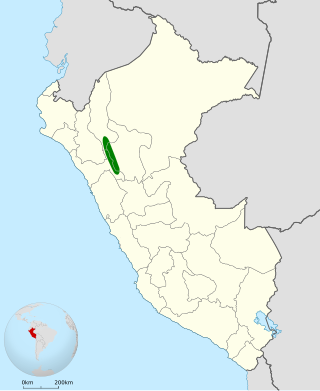
The Atuen antpitta, or southern tawny antpitta, is a species of bird in the family Grallariidae. It is endemic to Peru.






















